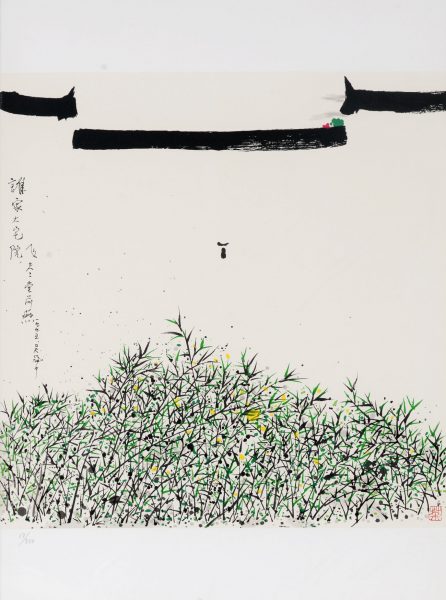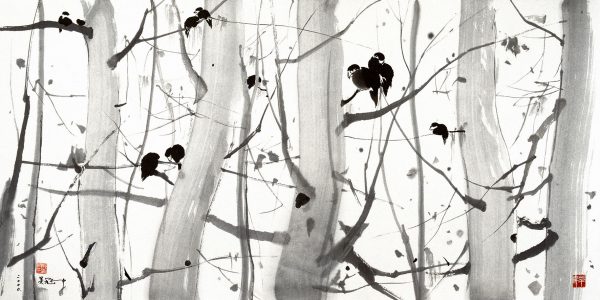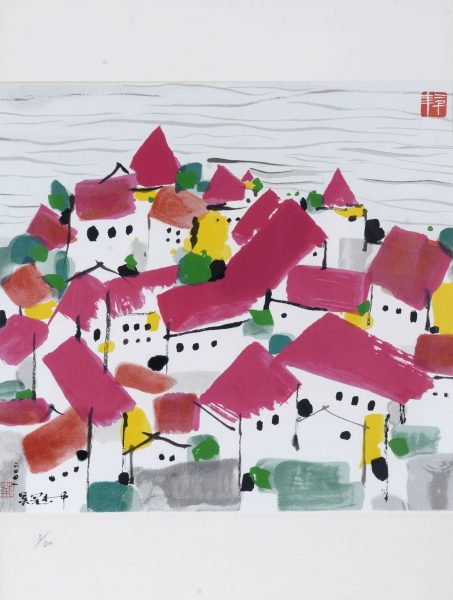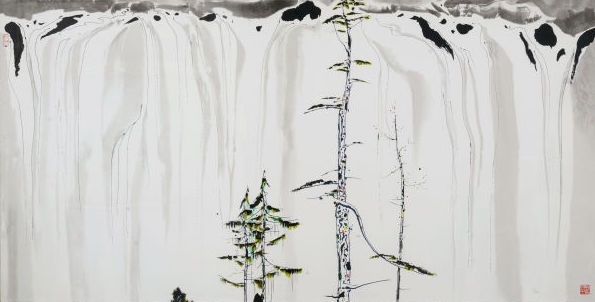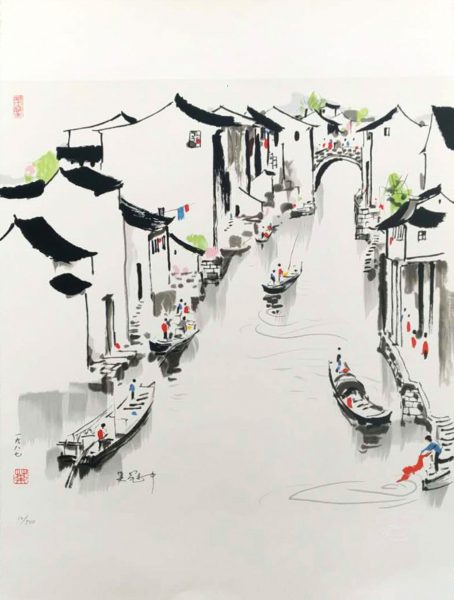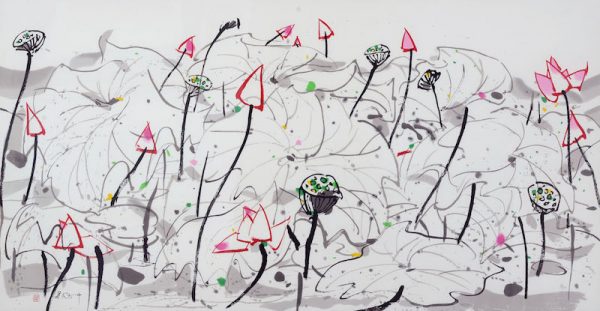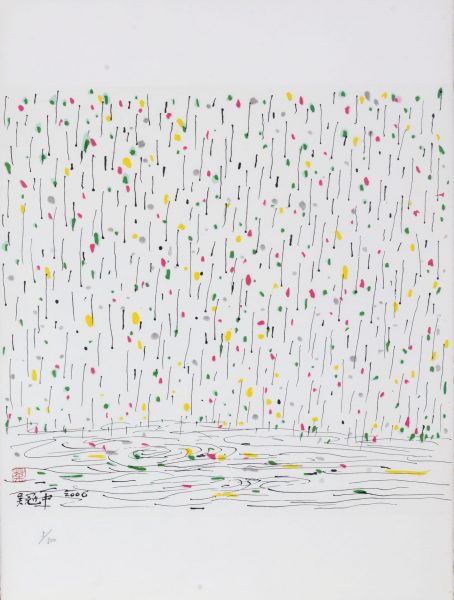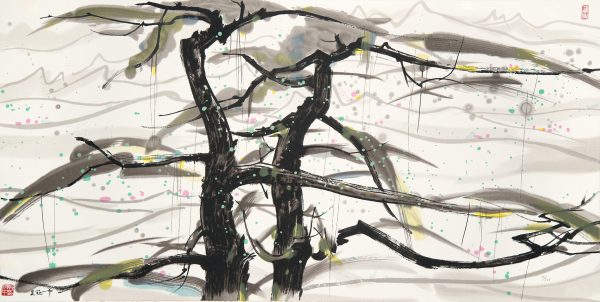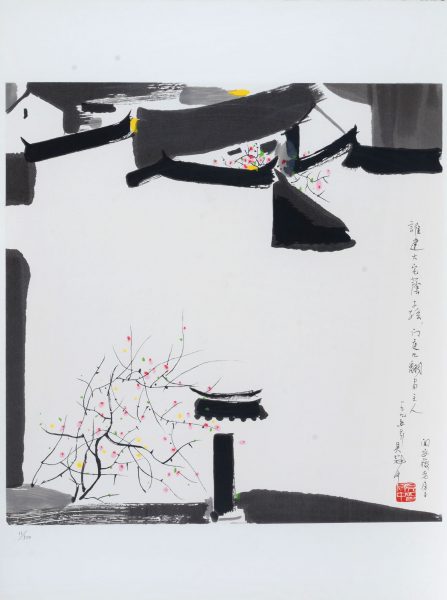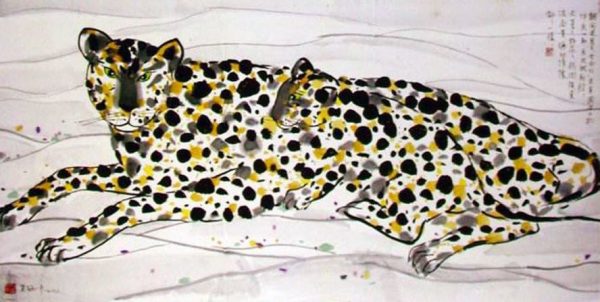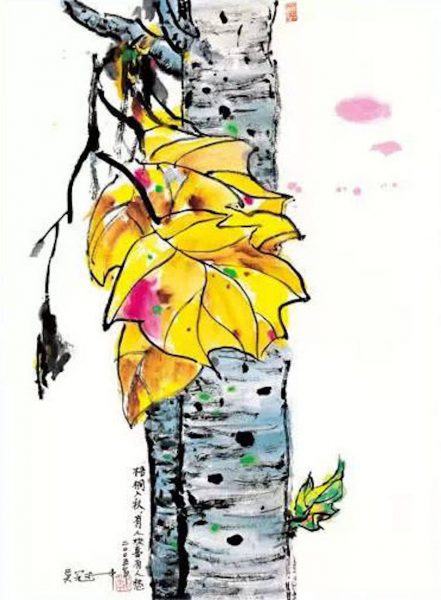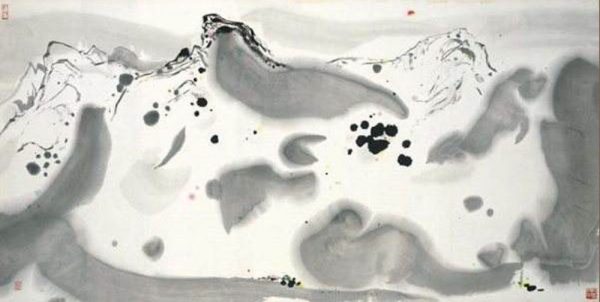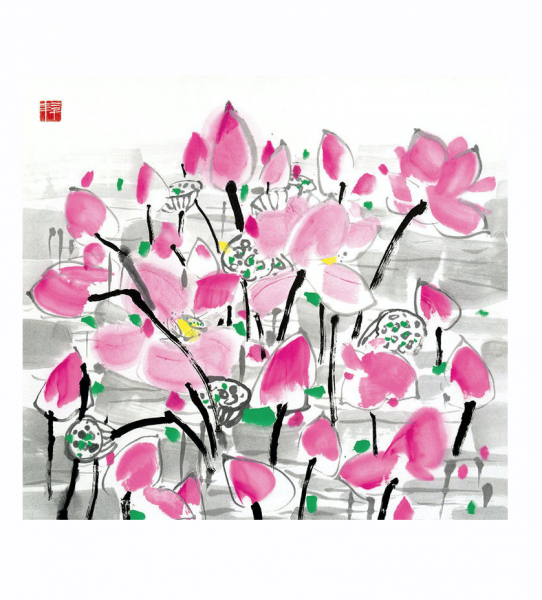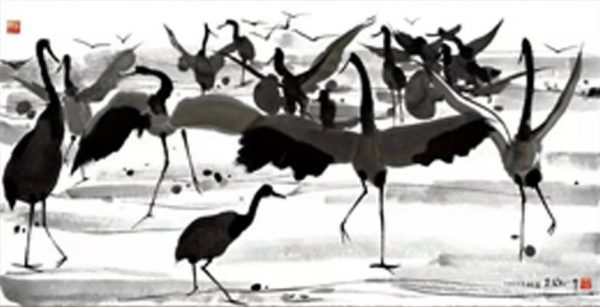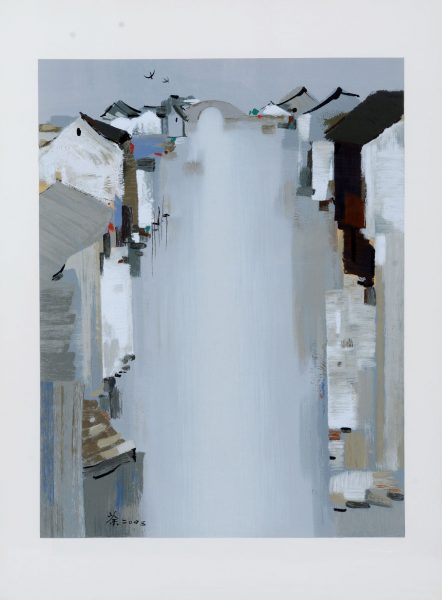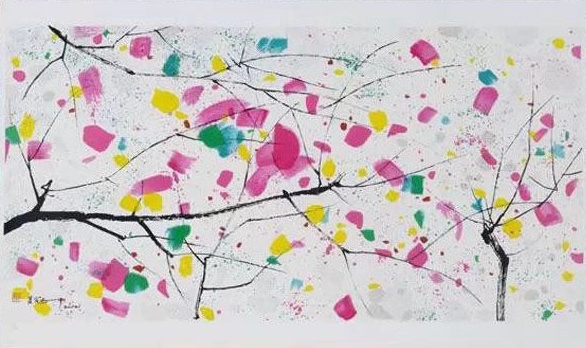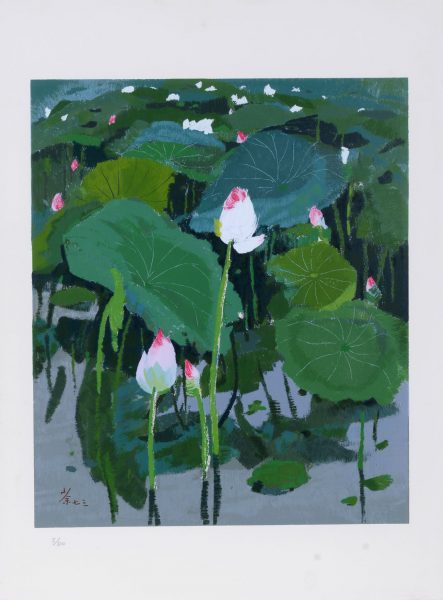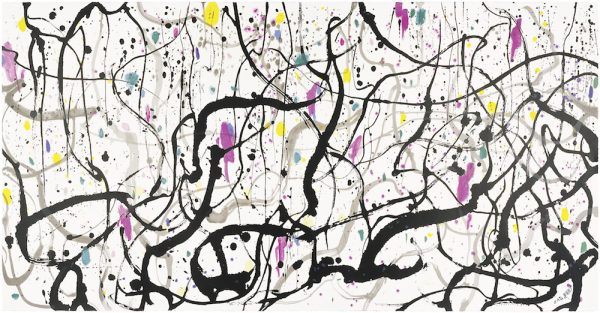Wu Guanzhong (1919-2010) is one of the most significant artists of 20th century China. His distinctive style fuses Western and Chinese art traditions, and set a new direction for modern Chinese art. A prolific painter and writer, his works paved the way for younger generations of artists and continue to inspire many to this day.
Wu Guanzhong achieved an elegant reconciliation of Western and Eastern aesthetics and became one of the acknowledged founders of modern Chinese painting. “If a painting contains no abstraction nor impressionistic elements,” he said of his syncretic approach, “it is a kite that will never fly. But if the painting completely breaks the connection between human feeling and the object portrayed, the kite string has been broken. I try to keep the line unbroken.”
Wu’s paintings have the color sense and formal principles of Western paintings, but a spirit and tonal variations of ink that are typically Chinese. Natural scenery is reduced to its essentials – simple but powerful abstract forms. He has had solo exhibitions in major art galleries and museums around the world, including mainland China, Hong Kong, Taiwan, Singapore, Japan, Korea, England and the USA.
Is the market strong for Wu Guanzhong’s art?
‘In China, Wu’s work has been very commercially popular for a while,’ says Chang. ‘Especially that from what tends to be considered his peak years, between the mid-1970s and the late-1990s. He’s regarded as having been one of his country’s great modern artists.’
Wu’s stock is also rising among Western collectors. Chang believes this is partly because his work (compared to that of most Chinese painters) is ‘pretty accessible’, and partly because the years since his death have seen a fuller appreciation of his career, with successful shows at venues like the Asia Society in New York.
Not that Wu was unknown in the West in his lifetime: in 1992, he became the first living Asian artist to have a solo exhibition at the British Museum.
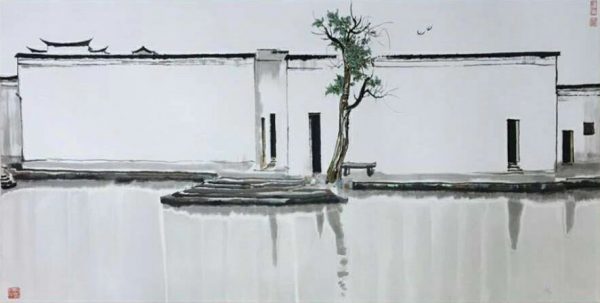
Twin Swallows
Among many of Wu Guanzhong’s paintings, Twin Swallows was the most outstanding and representative of his search for a synthesis of Western elements into traditional Chinese painting. It is a painting that captures both the static form of traditional Jiangnan architecture and the motion of two swallows as they fly toward a tree. Geometric shapes, especially rectangles, dominate half of the painting. For example, the front walls of the houses are horizontally placed white rectangles with simple black and gray lines to depict the edges and rooftop of each building. Doorways were painted in the same minimalistic manner, yet the contrast between the darkness inside the building with the lighter door frame is prominent enough to create a sense of depth. Wu’s attention to perspective and depth in Twin Swallow is a factor that distinguishes himself from many other traditional guohua painters. Although the white walls in Twin Swallows may seem like the dominating elements in this painting, it is in fact the pair of swallows that reveals Wu’s intention behind this painting. In the 1950s, Wu returned from France to his homeland. It was also a time when Chinese art entered the phase of socialist realism.This artistic movement had encouraged many artists to create artwork in order to contribute to the Chinese society. Similarly, Wu felt obligated to pass on the knowledge that he had gained in France to the younger generations in China in order to promote the idea of a synthesis among Western and traditional Chinese art.
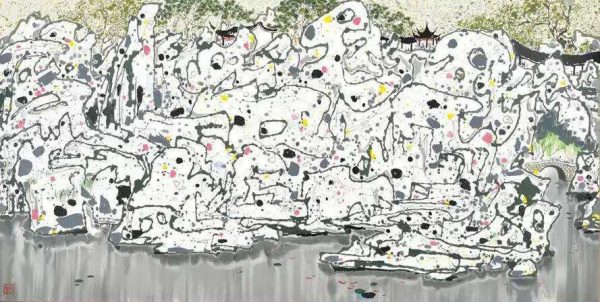
Lion Grove Garden
Lion Grove Garden was painted in 1983. The subject of this painting, Lion Grove, is the largest rockery in Suzhou. Wu Guanzhong had successfully incorporated the use of lines, planes, and dots in this painting. The lines were used to express a sense of freedom, which was also what Chinese artists enjoyed after the Cultural Revolution. Unlike traditional guohua artists, Wu’s ink outlines no longer suggest the physical form of the rocks, but instead seem to suggest how Wu perceive this landscape. The forms of the rocks are shaped in diverse ways, some being round, uneven, and hollow. He paid careful attention to the ups and downs, concave and convex, caverns and peaks, and sizes of the rocks. Although the structure of the rockery is hardly identifiable in this painting, this sense of ambiguity further encourages viewers to use their imagination and look beyond what is presented in front of their eyes. About two-thirds of the paintings consist of sinuous lines and splashes of ink and colored dots, of green, yellow, purple and red, that reinforces the spontaneity and fluidity of the painting as each dot sparkles across the painting. Artistic element of planes, such as the rooftop of Suzhou-style pavilion, the bridge, and the cloister add a hint of realistic element. The foreground of this painting is a lightly shaded pale grey water where the fish reside. Although the foreground isn’t as eye-catching as the rockery, it grounds the complex elements in a stable dimension.
Wu Guanzhong Limited Edition Prints @ Yang Gallery
